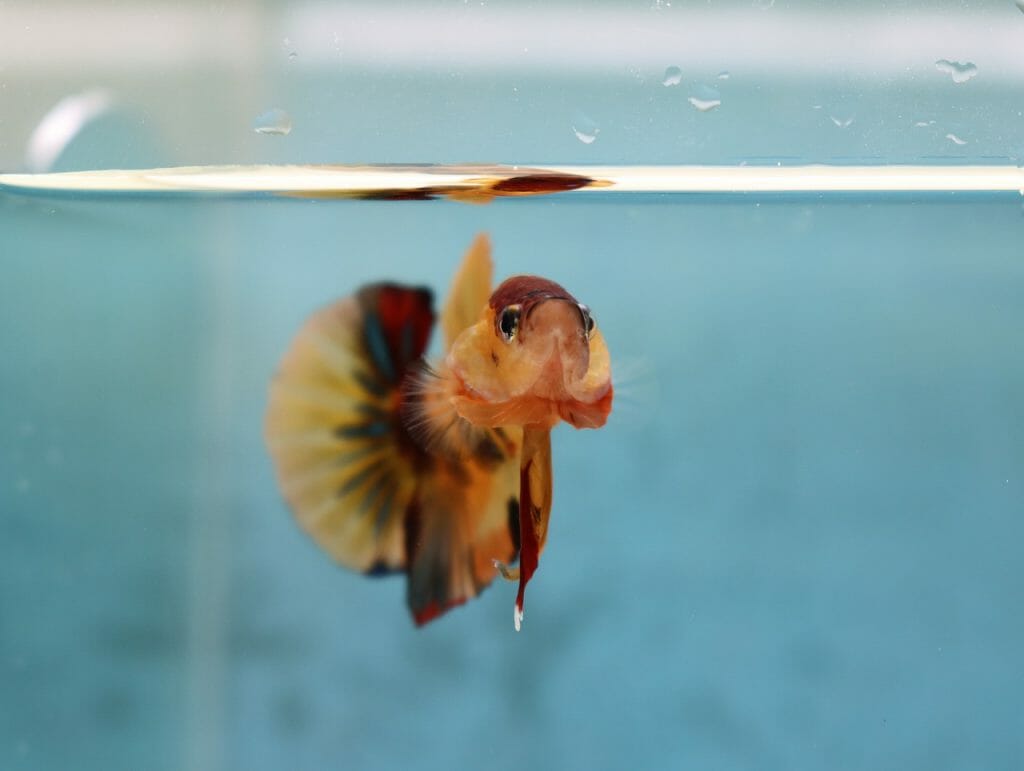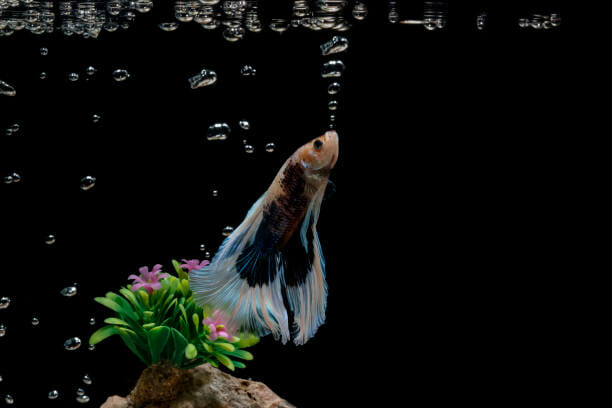Why Is My Betta Making Bubbles: What Is a Bubble Nest and its Benefits?
Bettas fish come in many different colors and patterns, but they all have a few things in common. For one, they are easy to keep and relatively low maintenance. They also require a lot of water and will grow quite large if provided with the right environment. Bettas are not the best fish for beginner fish keepers, but they make great aquarium fish for experienced hobbyists. They are very active and can be difficult to keep still, so be prepared to spend a lot of time interacting with your betta fish.
Making bubbles is a common behavior in bettas, and it’s not always clear why they do it but the main reason is for creating bubble nests. Some people think that bubble-making is a way to show off their swimming skills or to find food. Other people think that bubble-making may help with water temperature regulation. Let’s find out more about the main reason why bettas make bubbles!
Table of Contents
Why Do Betta Fish Make Bubbles?
Betta fish are known for creating bubble nests. Bubble nests are created by the betta fish to protect their eggs and young. The bubbles help to keep the nest cool and protect the eggs from being eaten by other fish or animals.

How to Care for Betta Bubble Nests?
Betta fish are known for their bubbly personalities and love of water. When they are in the mood, they will often create bubbles around their body. This is normal behavior that is used to communicate with others in their community or to attract mates. However, if your betta fish are making too many bubbles or they are becoming excessive, there may be a problem with their environment. Here are some tips to provide the best conditions for your Betta fish’s bubble nest.
- Make sure the water is clean and clear. Bubbles form when dissolved gas (such as oxygen) accumulates in a liquid. If the water is dirty or has particles that can block gas bubbles from forming, it will impact how much bubble activity your Betta fish can exhibit.
- Keep the water temperature comfortable for your betta. Bettas like a warm environment, so make sure the water never gets too hot or cold.
- Provide plenty of hiding spots for your Betta fish. This will help them feel secure and stimulated, which will encourage them to create more bubbles around their body.
Why Do Male Bettas Create Bubble Nests?
The male Betta fish make bubble nests to attract females. The bubbles are made with air and water, and the males use their mouths to create the bubbles. The bubbles are often bright colors, which helps them stand out from other fish in the area.
Why Are Eggs Kept in a Bubble Nest?
Betta fish eggs are kept in a bubble nest to protect them from predators and other environmental dangers. The bubble nest is made of small bubbles that the female betta creates with her mouth. The bubbles help to keep the eggs safe and warm, and they also provide a place for the fry to grow.

How Often Do Betta Fish Build Nests?
Betta fish have often been seen building bubbles, and many people believe that this is a sign that the fish are nesting. Betta fish owners generally see bubble nests appear every week or month. However, the frequency of bubble formation can vary depending on several factors, including water quality and temperature.
How to Encourage Building Bubble Nests?
If your male betta is not making bubble nests, there may be several reasons. He may be sick, injured, or just not interested in breeding anymore. If you think your betta is sick or injured, take him to the vet for a check-up. If he is just not interested in breeding anymore, there are a few things you can do to encourage him to get back into the breeding mood. One option is to change his environment slightly – move him from his regular fish tank to a smaller container with different plants and rocks. Another option is to feed him high-quality food that contains testosterone supplements.
Check the Water Quality
If you have a betta fish, it’s important to keep an eye on the water quality in their tank. If the water quality is poor, your betta will start making bubbles. This is a sign that they are stressed and need to be moved to a new tank or aquarium.
Check for Signs of Sickness or Injury
If you’re noticing your fish making bubbles, or displaying any other signs of illness or injury, it’s important to take action. Many diseases and injuries can be easily treated if caught in time, but if left untreated they can lead to death. Keep an eye out for any changes in your fish’s behavior, including the following:
- Lack of appetite
- Swimming towards the bottom of the tank or hiding
- Rapid breathing or gasping for air
- Drooling or vomiting
Assess Water Flow and Disruptions
Betta fish are often kept in bowls with a small amount of water. This creates a situation where the water level in the bowl is constantly changing, which can create disruptions at the surface level. When there are disruptions at the surface level, bubbles may form as gas molecules escape from the liquid and rise to the top.
Examine the Age of Your Betta
Betta fish typically live for around two to four but can live up to five years with proper care. The age of a betta fish is not indicative of its health or vitality; it is simply a reflection of how long the fish has been alive. A young betta fish may have shorter life spans due to genetic factors and environmental stressors, but an older betta fish will likely have more experience and be in better condition overall.
What If Your Betta Fish Stops Building a Bubble Nest?
Betta fish are often seen making bubbles in their tank, but some owners notice that the fish stop building bubble nests after a while. There are a few things that you can do to help your betta fish build back up their bubble nest if they have stopped doing so. First, make sure that the water quality in your tank is good. If the water is dirty or has high levels of dissolved minerals, it can impact how well your betta can build bubbles. Second, make sure that the temperature in your tank is comfortable for the betta fish. If the temperature is too cold or too hot, it can also impact their ability to build bubbles. Finally, provide them with plenty of hiding places and surfaces to explore.
How to Clean Your Tank Without Destroying Bubble Nest?
If you have a betta fish, you may have noticed that they love to make bubbles. Bubbles are usually a sign that your betta is happy and content. However, sometimes bubbles can be a sign that your tank is dirty and your betta needs to be cleaned. Here are some tips on how to clean your tank without ruining a betta’s nest.
- Check the water quality first. Make sure the water is clear and has the right amount of nutrients. If the water quality isn’t good, it’s best to wait until it is before cleaning the tank.
- Remove any plant ornaments from the tank. These things can get in the way of cleaning and can also add debris to the water.
- Remove any debris from the bottom of the tank. This includes pieces of plant material, plastic toys, and even uneaten food. You can also use a gravel cleaner to remove dirt and bacteria from the bottom of the tank.
- Use a betta cleaning brush to scrub all surfaces of the tank. Make sure to get in between rocks and crevices where algae can grow rapidly.
- Fill the tank with water as close to the desired level as possible. This will create a hydrostatic pressure that will help push debris from the tank.